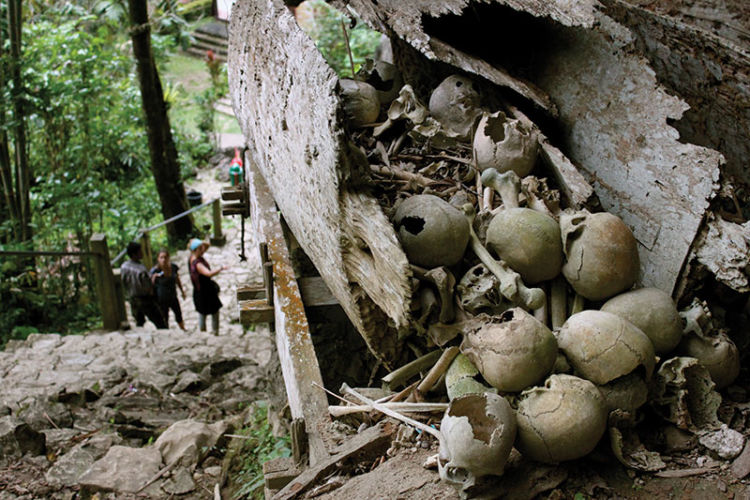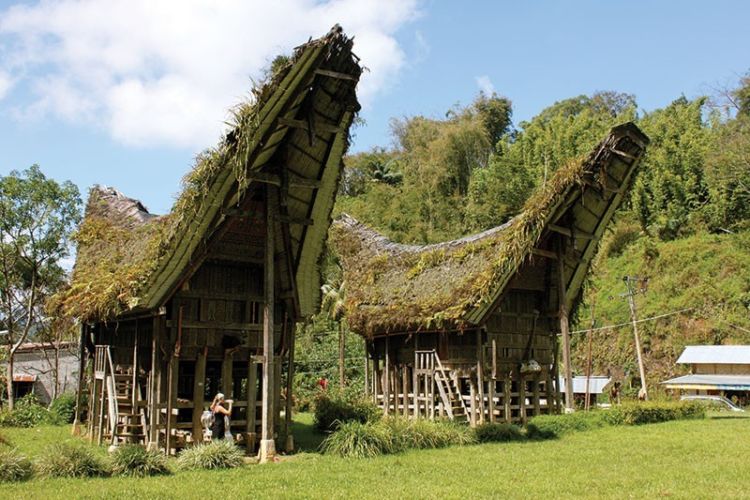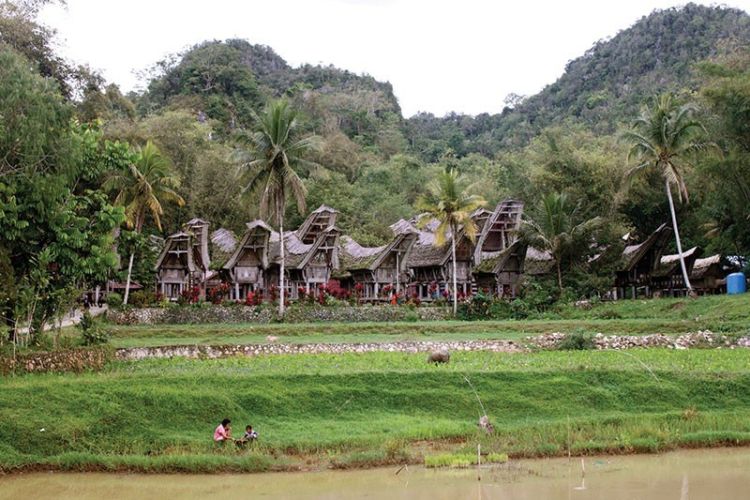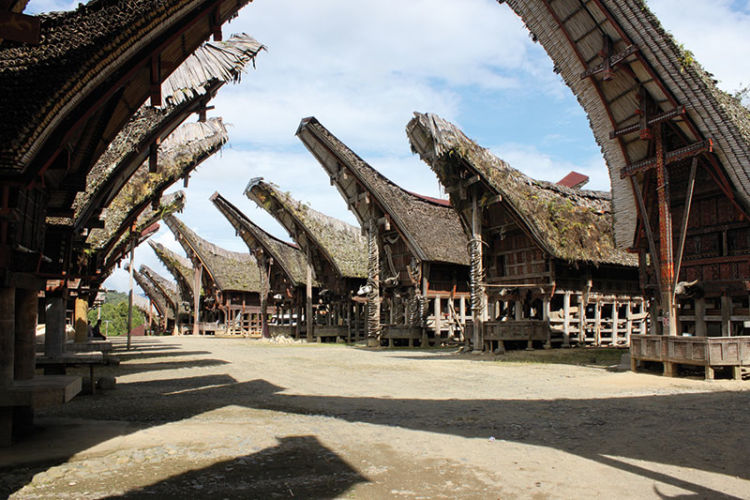The contents of this tropical Indonesian island are just as unusual as its shape.
The splay limbs of the island are washed by turquoise ocean waters teeming with live coral and aquatic life, while its interior is mountainous and jungled. Sulawesi’s beguiling cultures, long isolated by the impenetrable topography from the invasion of modernity, are thriving inland. We set out to explore the fascinating traditional culture of Toraja people, with their elaborate funeral ceremonies and mesmerizing architecture. The central region of Tana Toraja is also a home to some of Sulawesis’ most spectacular landscapes. Visiting Toraja is an assault on all the senses. The intricately carved, colorful houses with boat shaped roofs are surrouned by towering emerald green rice paddies and protected by the ragged mountains.
To reach Rantepao – the cultural center of Toraja region – you have to be prepared to endure an eight hour long bus ride from the capital of Sulawasi – Makassar. All the cultural and natural gems are scattered around the capital.

The Ke’te Kesu’ village features four perfectly preserved “Tongkonans” – traditional houses and on the cliff face behind the village, you’ll find some of the oldest hanging and cave graves, some allegedly over five hundred years old. The sight feels quite macabre as some of the hanging coffins suspended on beams have collapsed and fallen into jumbles of skulls and bones.
Londa is the largest burial cave site, enter if you’re thin and not claustrophobic to see some haphazardly placed skeletons, stalactites and stalagmites formations inside the cave.
Speaking of the macabre – while in Rantepao, you absolutely must visit a local funeral. It is socially more important event than a wedding for Torajans and the deceased’s corpses continue to remain part of the family. Some of them still observe the old custom of never leaving the dead alone and bring them food four times a day out of respect. This ritual goes on until the official funeral can be held, which can be months from the day the person passed away as family members gather from near and far. Torajans preserve the bodies with formaldehyde which eventually causes them to mummify. The unique death practices of Torajans are obscured in mystery as there is not much evidence about its origins.

The funeral itself is a macabre event and not one for the faint of heart. We literally stepped over freshly butchered pigs and water buffalos as the buffalo is believed to be the vehicle to the afterlife. For the most prominent members of the Toraja society, the event can be even a week long.
Must visit is the main market Pasar Bolu at Rantepao – the largest water buffalo market in the world. Buffalo is for Torajans what fancy cars are for some Westerners – a status symbol. It is also a pretty fitting analogy, as some of these majestic animals cost more than a regular car. The buffalos are imported from all over the world and most of them are slated to be slaughtered at the funeral ceremonies. The adjacent traditional market is a feast for your senses with all the colorful produce and fragrant spices. Go stroll and bargain in the morning when the markets are buzzing.

Toraja feels like an otherworldly place and offers so many special experiences it is no wonder it is high on the bucket list for so many.
Words & Photos by Vero


